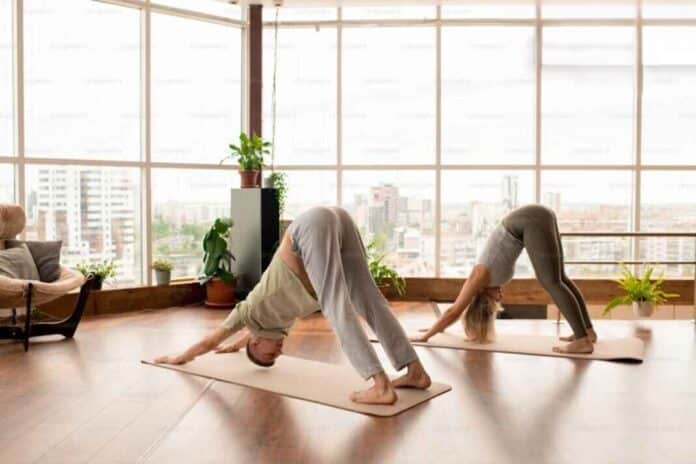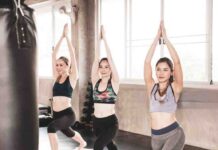A Comprehensive Guide to Yoga for Beginners at Home
Yoga for Beginners at Home
What is Yoga?
Yoga is an ancient practice that combines physical exercises, breathing techniques, and meditation to achieve mental and physical balance. It is a highly effective tool for enhancing overall health and reducing stress. Beginners can easily practice yoga at home without needing special equipment or studio memberships.
Why is Yoga for Beginners at Home an Ideal Choice?
- Flexibility in Timing: You can practice yoga anytime that fits your schedule.
- Low Cost: No need for expensive memberships or equipment.
- Comfort of Home: Practice in a safe and relaxed environment.
- Ease of Progression: Start with simple poses and develop your skills gradually.
Benefits of Yoga for Beginners at Home
1. Improved Flexibility and Balance
Yoga involves poses (asanas) that enhance body flexibility and strengthen muscles.
2. Stress Reduction and Mood Improvement
Yoga breathing exercises and meditation reduce stress levels and promote relaxation.
3. Better Physical Fitness
Yoga provides a holistic solution for building strength and improving overall fitness.
4. Enhanced Self-Awareness
It increases body awareness and fosters a deeper mind-body connection.
How to Start Practicing Yoga for Beginners at Home
1. Choose a Suitable Space
Pick a quiet, comfortable spot in your home with enough space for movement.
2. Gather Basic Essentials
- Yoga Mat: For support during exercises.
- Comfortable Clothing: Allows ease of movement.
- Pillow or Blanket: For support in some poses.
3. Stick to a Regular Schedule
Set a daily time for yoga practice, even if it’s just 10-15 minutes.
4. Begin with Simple Exercises
- Breathing exercises (Pranayama) to improve focus and breathing.
- Easy poses such as:
- Child’s Pose (Balasana).
- Cat-Cow Pose (Marjaryasana-Bitilasana).
- Mountain Pose (Tadasana).
5. Utilize Educational Resources
- Online Videos: Platforms like YouTube have beginner-friendly channels, such as Yoga With Adriene.
- Apps: Apps like Down Dog or Daily Yoga provide guided yoga sessions for all levels.
- Books: Beginner-focused books, such as Yoga for Beginners, can be a helpful reference.
- Virtual Classes: Many yoga instructors offer online classes tailored for beginners.
Best Yoga Poses for Beginners at Home
1. Mountain Pose (Tadasana)
- Focuses on improving posture.
- Enhances body awareness and balance.
2. Child’s Pose (Balasana)
- Stretches the back and hips.
- Provides a calming effect and reduces stress .
3. Downward-Facing Dog (Adho Mukha Svanasana)
- Strengthens the arms, shoulders, and legs.
- Improves circulation and flexibility.
4. Bridge Pose (Setu Bandhasana)
- Strengthens the spine and lower back .
- Promotes relaxation and reduces tension.
5. Seated Spinal Twist (Ardha Matsyendrasana)
- Enhances spinal flexibility.
- Relieves tension in the back and shoulders.
6. Warrior II Pose (Virabhadrasana II)
- Builds strength in the legs and core.
- Improves focus and stability.
7. Tree Pose (Vrikshasana)
- Encourages balance and concentration.
- Strengthens the legs and core.
Tips for Beginners Practicing Yoga at Home
1. Listen to Your Body
Avoid pushing yourself too hard, and modify poses if necessary.
2. Gradual Progression
Start with basic poses and advance to more challenging ones at your own pace.
3. Focus on Breathing
Deep, controlled breathing (Pranayama) enhances focus and helps you stay present during practice.
4. Use Props if Needed
Props like blocks or straps can support your poses and make them more accessible.
5. Avoid Comparisons
Yoga is a personal journey. Focus on your progress rather than comparing yourself to others.
6. Be Consistent
Regular practice is key to reaping yoga’s benefits . Even a few minutes daily make difference.
7. Warm-Up and Cool Down
Start your practice with light stretches and end with a relaxation pose like Savasana (Corpse Pose).
Common Questions About Yoga for Beginners at Home
1. Can I Learn Yoga Without an Instructor?
Yes, with the abundance of online resources like videos, apps, and books, you can start practicing yoga at home.
2. How Often Should I Practice Yoga?
Begin with 2-3 sessions per week and increase frequency as you become more comfortable.
3. Do I Need Special Equipment?
A yoga mat and comfortable clothing are enough to get started. Props like blocks and straps can be added later if needed.
4. What’s the Best Time to Practice Yoga?
Morning is ideal for energy and focus, but you can practice at any time that suits your schedule.
5. Can I Do Yoga While Pregnant?
Yes, but always consult your doctor and follow yoga practices specifically designed for pregnancy.
6. How Do I Prevent Injuries While Practicing?
Pay attention to proper alignment, avoid forcing poses, and listen to your body to avoid overexertion.
Additional Resources for Yoga Beginners
- YouTube Channels: Yoga With Adriene, PsycheTruth Yoga, SarahBethYoga.
- Apps: Asana Rebel, Glo Yoga, Simply Yoga.
- Books: The Yoga Bible by Christina Brown, Light on Yoga by B.K.S. Iyengar.
- Online Communities: Join yoga forums or social media groups for tips and motivation.
Conclusion
Practicing yoga for beginners at home is an excellent way to improve your physical and mental health . With dedication, a gradual approach, and access to the right resources, anyone can start their yoga journey. Embrace the process, and enjoy the transformative benefits of yoga in the comfort of your own home.
Start your practice today and take your first step toward a healthier, more balanced life!



